
Q: Can you share with us something about the history and origin of Madhubani art?
Madhubani is a place in the north-eastern part of India, in Bihar, in the Mithilanchal area. It is the birthplace of Sita, the wife of Lord Ram. This form of painting was started by the country women of Madhubani, and the entire culture is called Mithila culture. They started using natural pigments, like pollen, turmeric, cow dung, or indigo to make patterns on the walls of their homes, which were around the celebration of life and marriage.
Since Mithilanchal is considered to be the birthplace or mother’s home of Sita, they celebrate it in that way. And also the fact that Sita is a woman. In Madhubani, a lot many forms are related to the Tantric form of painting depicting the goddess Durga, Kali, or Ardhanarishwar [half man-half woman], reflecting the locals’ joy and pride that these female deities have taken birth in their place.
Madhubani is also about the celebration of marriage. There is something called kohbar, which is a small room that is painted and decorated – the entire walls are decorated at the time of a wedding – and this room is given to the newly-wedded couple for consummating their marriage. So, all the elements that are used in these paintings are about nature, fertility, the celebration of love, the navagrahas [the nine planets] out there – everything auspicious. The fish, the turtle, the peacock, the parrot, everything that is auspicious is celebrated.
So it’s is about fertility, and the celebration of life and marriage. That’s how it started.
Q: What are the media used in Madhubani art?
Esta historia es de la edición June 2020 de Heartfulness eMagazine.
Comience su prueba gratuita de Magzter GOLD de 7 días para acceder a miles de historias premium seleccionadas y a más de 9,000 revistas y periódicos.
Ya eres suscriptor ? Conectar
Esta historia es de la edición June 2020 de Heartfulness eMagazine.
Comience su prueba gratuita de Magzter GOLD de 7 días para acceder a miles de historias premium seleccionadas y a más de 9,000 revistas y periódicos.
Ya eres suscriptor? Conectar
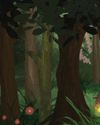
A Flower from THE HEAVENS
November 14 is Children's Day. This year, SARA BUBBER brings to you a world of forests, magical flowers, festivals, and some animals you may have never seen.

Meeting Phenomenal Women
The author, CHITRA BANERJEE DIVAKARUNI, is interviewed here by TARA KHANDELWAL and MICHELLE D'COSTA about her books on mythology, like The Palace of Illusions, which is a retelling of the Mahabharata from Draupadi's point of view, and The Forest of Enchantments, which is a retelling of the Ramayana, from the eyes of Sita. And there's The Last Queen, which is about Rani Jindan's life.
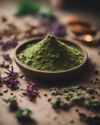
HERBAL TOOTH POWDERS: Rediscovering Ayurveda's Natural Secrets
SRAVAN BANDA presents a natural herbal tooth powder, offering a holistic approach to oral hygiene, harnessing the power of medicinal herbs.

The Dance of Light and Shadow Lessons from the Dolomites
ALAIN DESVIGNE explores the Dolomites, listed as a UNESCO World Heritage Site in 2009.
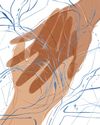
FINDING OUR WAY
A Polynesian Explorer's Journey of Discovery
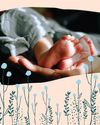
The First Imprint: Understanding PTSD
CHRISTIANNA DEICHMANN is the Director of Education at the Association for Pre and Perinatal Psychology and Health (APPPAH), where she educates both professionals and parents on fostering the most nurturing environments for welcoming new life into the world.

The Tipping Point
In this final conversation of the series, J. FREDERICK ARMENT continues to talk with CHRISTINE JONES about promoting peace in the world.
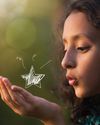
UNLOCK YOUR POTENTIAL
Take The Brighter Minds Path To Cognitive Development

The Intrinsic Goodness of the Heart
DAAJI shares some thoughts on heartfelt acceptance and all it has to offer. He says, \"It is the heart's intrinsic goodness that allows us to accept everything as part of us.
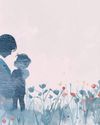
How Does Fear Affect Our Roles as Mothers? - Neelam Shivhare explores some of the great ancient texts of India on motherhood, compares the behavior of Kaikayi and Yashoda
Neelam Shivhare explores some of the great ancient texts of India on motherhood, compares the behavior of Kaikayi and Yashoda, and realizes the importance of removing fear from our hearts in order to nurture our children.For young women like myself, who are future mothers, I trust we are on the path of becoming selfaware and brutally honest with ourselves. We are creative beings, never forgetting the gifts with which we have been bestowed— the love and tenderness, natural instincts, and intuition to feel the right path. It all lies in the mysterious meanderings of the heart. Are we really listening to our hearts, or confusing the bombarding information on social media with reality?